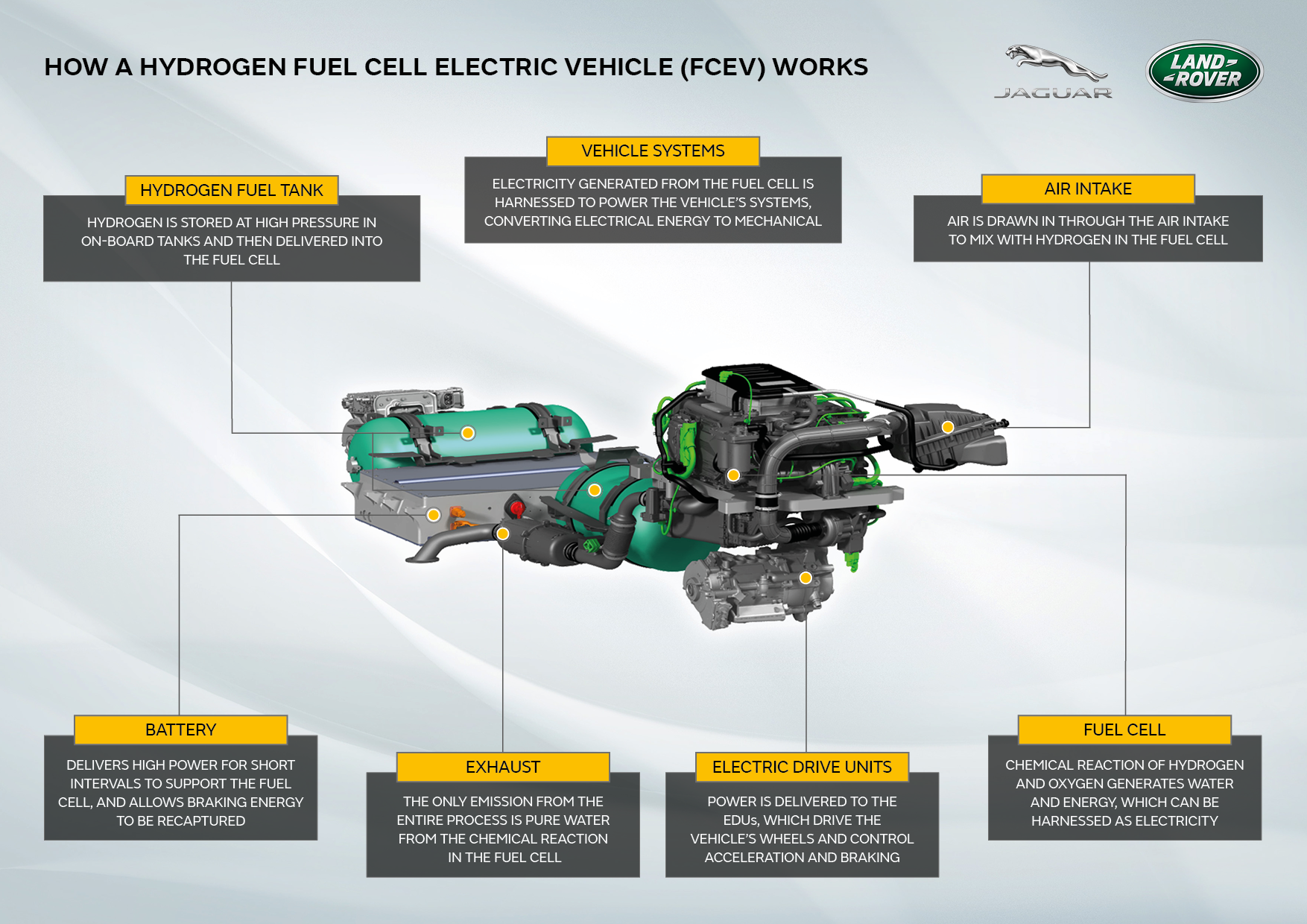Land Rover has announced that it intends to start testing a Defender powered by a hydrogen fuel cell (FCEV) powertrain later this year. This is part of Jaguar Land Rover’s plan to achieve zero tailpipe emissions by 2036 and zero carbon emissions across its supply chain, products, and operations by 2039 under its recently announced Reimagine strategy. The Land Rover Defender FCEV prototype will be used to see how hydrogen fuel cell EVs complement battery-electric vehicles.
As part of Project Zeus, the Land Rover Defender FCEV prototype will be the testbed for evaluating how hydrogen fuel cell EVs perform off-road and when towing. Range and refueling time will also be tested to see how viable FCEVs are The U.K. Government-backed Advanced Propulsion Center, Delta Motorsport, AVL, Marelli Automotive Systems, and the U.K. Battery Industrialization Center (UKBIC) are just some of Land Rover’s partners in developing the FCEV prototype.

“We know hydrogen has a role to play in the future powertrain mix across the whole transport industry, and alongside battery electric vehicles, it offers another zero-tailpipe emission solution for the specific capabilities and requirements of Jaguar Land Rover’s world-class line-up of vehicles,” said Ralph Clague, Head of Hydrogen and Fuel Cells at Jaguar Land Rover. “The work done alongside our partners in Project Zeus will help us on our journey to become a net-zero carbon business by 2039, as we prepare for the next generation of zero tailpipe emissions vehicles.”
Unlike an EV, hydrogen fuel cell vehicles generate electricity via a fuel cell stack to power an electric motor and a battery. Air is drawn to the fuel cell stack via an air intake to react with the hydrogen to generate power. Jaguar Land Rover sees this technology coexisting with battery-electric powertrains and will be used on larger vehicles to achieve a long driving range with minimal losses in hot and cold conditions.
By the looks of it, the Land Rover Defender FCEV will feature two hydrogen tanks one mounted under the floor and another behind the rear seats. The fuel cell stack is mounted in front like a traditional internal combustion engine. Positioned next to one of the hydrogen tanks is a large lithium-ion battery, which stores some of the energy generated by the fuel cell stack. The only byproduct of the chemical reaction within the fuel cell stack is water. One of the big benefits of a hydrogen fuel cell powertrain is refueling because you top it off just like a standard gas-powered car, taking between 3 to 5 minutes to fill the tank.
If the Land Rover Defender FCEV prototype makes it to production, it’ll join the Toyota Mirai, Hyundai Nexo, and Honda Clarity in the shortlist of vehicles powered by hydrogen. Citing the International Energy Agency (IEA), Jaguar Land Rover notes that the number of FCEVs on the road has doubled while the number of hydrogen refueling stations grew by 20 percent. The Hydrogen Council predicts that by 2030, FCEV use could top 10 million units and the number of hydrogen stations could grow by 10,000 locations worldwide.
Currently, the Land Rover Defender is available in Europe with a plug-in hybrid powertrain. It uses a 2.0-liter turbo-four coupled to an electric motor, an eight-speed automatic transmission, and a lithium-ion battery. The total system output is 400 hp and 472 lb-ft of torque turning all four wheels.

